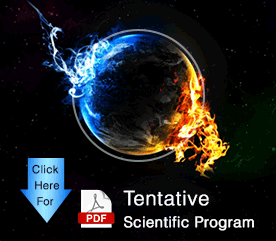
Biography
Biography: Habibullo I Abdussamatov
Abstract
The climate system depends on an extremely complex set of physical processes taking place in the ocean-land-atmosphere system, which in turn is influenced by various, mainly the quasi-bicentennial variation of the total solar irradiance (TSI). Only variation of TSI to 0.5% leads to small increments of the planetary temperature and is the initial triggering mechanism of subsequent multiple feedback effects. The feedback effects leading to significant changes in the Bond albedo, content of greenhouse gases in the atmosphere and width of the window its transparency. The climatic influence of subsequent feedback effects depends on the duration of the period cooling (warming) and its influence can increase the direct influence of the quasi-bicentennial variation of TSI up to three times. Since ~1990, the Sun has been in the declining phase of the quasi-bicentennial variation TSI. Decrease in the portion of TSI absorbed by the Earth since 1990 has remained uncompensated by the Earth's longwave radiation at the previous high level due to oceans' thermal inertia. The Earth has and will continue to have, negative average annual energy budget and a negative thermal condition. The quasi-centennial epoch of the new Little Ice Age started after the maximum phase of solar cycle 24. The start of Solar Grand Minimum is anticipated in 2043±11. Beginning of a phase of a deep cooling of the new 19th Little Ice Age for the last 7,500 years is anticipated in 2060±11. The gradual weakening of the Gulf Stream, which is driven by the heat accumulated by oceans water in the tropics due to of cyclic variations of the TSI, leads to more strongest cooling in the zone of its action. The quasi-bicentennial cyclic variations of the TSI together with successive very important influences of secondary feedback effects controls of corresponding alternations of the climate.

